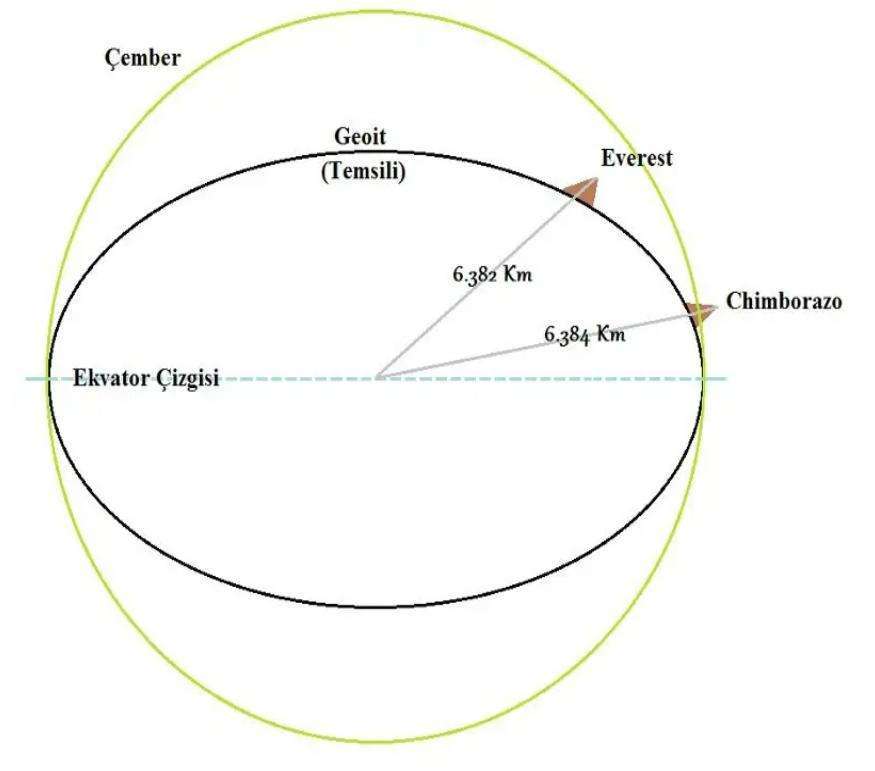Since Sir Edmund Hillary reached the summit in 1953, thousands of adventurers have set out to conquer the deadly peak of Mount Everest. So many people attempt it every year that the Himalayas have become a garbage dump. Everest owes its popularity to its title of “the highest mountain in the world”, but according to science, in reality it is not. In fact, this honor belongs to the volcanic mountain of Chimborazo, part of the Andes mountain range in the Republic of Ecuador.
What makes Mount Chimborazo the highest point in the world?
The most important factor determining the shape of a celestial body is gravity. If you put enough uniform matter together in one place, it will take on a spherical shape as a result of gravitational influence. However, although we think of our planet as a sphere, it is not exactly a sphere as we know it. It actually has what is called an “equatorial bulge”. To be precise, the Earth is shaped like a Geoid. A geoid is a geometric shape called a sphere that is flattened on both sides.
Because of the shape of the Earth, when you stand at the Equator, you are 21 km farther from the center of the planet than someone at the North Pole. So while Everest is the highest mountain on Earth, the top of Everest is not the farthest point from the center of the Earth. The summit of Chimborazo is 6,248 meters above sea level. This would mean that it is 2,600 meters shorter than Everest. But everything changes when measured from the center of the Earth.
Because of the shape of the Earth, mountains near the equator are technically higher than other mountains. Chimborazo is almost directly above the equatorial bulge. Therefore, someone standing on top of Chimborazo would be 2 km higher above the center of the Earth than someone standing on top of Everest.
Different parameters are taken into account when measuring the height of a mountain. All mountains are usually measured from sea level for convenience and consistency. But what if the measurements are simply from the base to the summit? Would Everest still top the charts? The answer would still be no. That honor goes to Mauna Kea, an inactive volcano in Hawaii.

Although its summit is 4,205 meters above sea level, most of Mauna Kea is hidden below sea level. Measured from the base to the summit, Mauna Kea is 10,211 meters high. This means that it is much higher than Mount Everest.
If Chimborazo is the world’s highest mountain, why are people still trying to climb Everest?
If you are a mountaineer, you want the toughest challenge Everest has to offer. It takes 10 days just to get to Everest base camp, six weeks to acclimatize and then 9 days at best to climb to the summit. Mount Chimborazo, on the other hand, is an easy mountain to climb compared to Everest. And Everest is still the highest mountain when measured from sea level.
If you use that as a measure, Chimborazo is not even the highest peak in the Andes. That title belongs to Mount Aconcagua, which is 6,961 meters above sea level. So, if you dream of climbing Everest and having your name written somewhere next to Sr Edmund Hillary, you can keep on dreaming.
Finally, speaking of mountains, let’s not forget the highest mountain in the solar system. Olympus Mons is the highest mountain in the solar system. Located on Mars, this gigantic mountain rises above the plains of the red planet. With a peak of more than 23 km, Olympus Mons is about three times the height of Everest. See the image below for a comparison.


